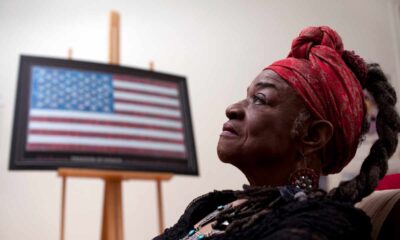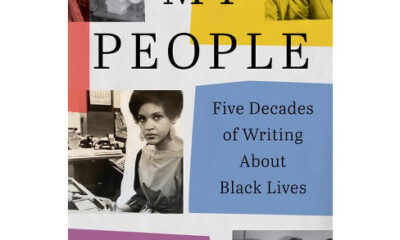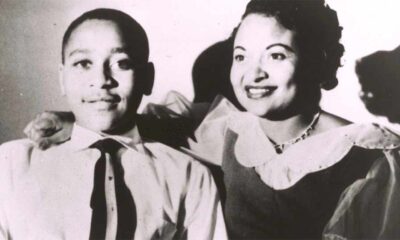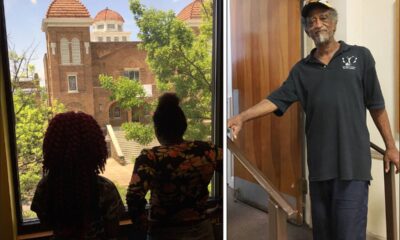Book Review
Medgar & Myrlie

Medgar Evers and the Love Story That Awakened America.
Joy-Ann Reid’s Medgar & Myrlie: Medgar Evers and The Love Story That Awakened America (Mariner Books, 2024) is a stirring portrayal of the life of Medgar Wiley Evers and Myrlie Evers-Williams. Readers may think that they know the story of Medgar Wiley Evers.
However, Reid notes that when the Oprah Daily published its list of 30 Civil Rights leaders of the past and present in 2023, Medgar Evers was not listed: 30 Civil Rights Leaders to Know from Today and the Past (oprahdaily.com). The website cites Dr. Martin Luther King, Jr., Malcolm X, W.E.B. DuBois, Julian Bond, A Phillip Randolph, Ella Baker, and Roy Wilkins among others.
Reid suggests that the reason that Medgar was not highlighted as a major civil rights leader was because his assassination occurred just before the killing of four little girls at the 16th Street Baptist Church, the March on Washington in 1963, the 1964 Freedom Summer, and a torrent of civil rights protests.
Reid is the host of MSNBC’s The ReidOut and former host of the weekend MSNBC show AM Joy. She uses investigative reporting to provide first-hand accounts of individuals who knew Medgar and Myrlie and who participated in the Civil Rights Movement. Her extensive interviews with Myrlie provide an added layer to the emotional, intense, and heart-wrenching accounts of Medgar and other people involved in the Movement.
Medgar & Myrlie begins with Reid’s description of how Medgar and Myrlie meet, fall in love, and become a strong team who collaborate and work alongside each other in their quest to end segregation in Jackson, Mississippi, and to increase the number of Black people in Mississippi who are not intimidated or deterred from participating in acts against voter suppression. Readers gain a deep understanding of the fears and challenges experienced by Medgar and Myrlie as well as the growing love they have for each other and the ways that Medgar prepares Myrlie to continue the struggle against segregation if he does not survive.
Although there have been two biographies of Medgar Evers: The Autobiography of Medgar Evers: A Hero’s Life and Legacy Revealed Through His Writings, Letters, and Speeches co-authored by Myrlie Evers-Williams and the late Manning Marable (Civitas, 2006) and For Us the Living by Myrlie Evers Williams, this book provides an expanded historical and sociological perspective for understanding the events that shaped the life and work of Medgar Evers.
Reid’s recounting of Medgar’s experiences after fighting in WWII and the anger, frustration, and experiences of other Black men who upon returning to Mississippi after the war, felt as if no progress regarding their civil rights had been made since slavery help readers understand Medgar’s persistence and determination to make a difference in Mississippi. The lynching and murder of Emmett Till also weighs heavily on Medgar and gives him and many the strength to remain in the front seat of the struggle.
Reid spends a significant amount of time describing Medgar’s activities with the NAACP. His relationship with the NAACP eventually becomes fraught with tension. He becomes an NAACP State Field Officer and is determined to organize boycotts and protests against segregation in addition to voter registration drives. To do this, he wants to strengthen the number of people in the movement and actively recruit people to join the NAACP.
However, many who want to join fear being fired from their jobs if it is found that they belong to this organization. The leadership of the NAACP urges Medgar to focus on voter registration (Medgar’s activities resulted in the NAACP directing many resources on bail funds for college students who were lodging sit-ins and marches). Additionally, Medgar wants to enroll in the University of Mississippi Law School. Reid informs us that the NAACP thought Medgar’s time would be better spent focusing on voter education at the state level while the NAACP battled segregation in the courts.
One of the most moving and emotional chapters in the book is “How to Be a Civil Rights Widow.” Upon the murder of Medgar, Myrlie feels very alone and realizes that she has to sustain the legacy of the man whom she deeply loved and who had died while fighting to end segregation in the South. In later years, she forms a sisterhood with Dr. Betty Shabazz and Coretta Scott King. However, in 1963, she bears that burden alone. Her strength, love, and passion for the work she continues without Medgar Evers catapults her into becoming a spokesperson for Civil Rights and eventually becoming Chair of the Board of Directors of the NAACP.
Reid reminds us that we must ensure that history is accurately told and depicted in the narrative of this country. Medgar & Myrlie: Medgar Evers and The Love Story That Awakened America expands our narrative of the Civil Rights struggle and enriches our understanding of the trials, tribulations, hopes, and fears of Medgar and Myrlie. We must continue to say their names.
Dr. Brenda M. Greene is Professor of English, Founder and Executive Director of the Center for Black Literature, and Senior Special Assistant to the Provost at Medgar Evers College, CUNY. For more information, visit https://www.drbrendamgreene.com













